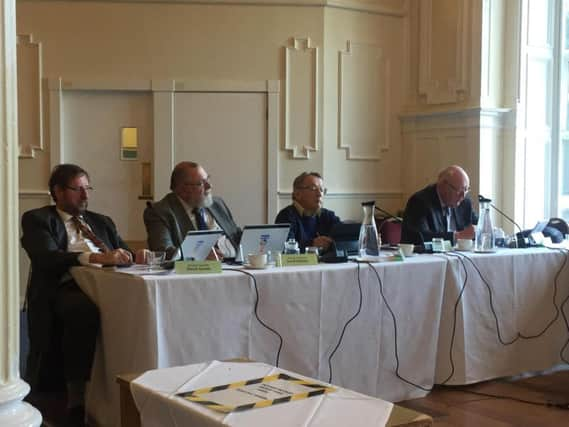67 per cent of Harrogate and Knaresborough schools predicted to be in deficit by 2020/2021


The financial position of North Yorkshire's schools was presented to members of the Harrogate and Knaresborough area committee earlier this month.
In a report presented at the meeting, councillors were told at the start of 2018/2019 five Harrogate and Knaresborough schools, constituting 28 per cent of the area's schools, were in deficit with a total projected deficit of £782k.
Advertisement
Hide AdAdvertisement
Hide AdBy March 2021, the county council predicts 12 schools (or 67 per cent) of schools in the area will be in deficit, for a total of £3.4m.
Harrogate and Knaresborough's position mirrors the wider county situation, with 67 per cent of the county's schools also predicted to be in deficit by 2020/2021, at a value of £30.6m
The report states that among the authority's funding issues was concerns around the overall quantity of funding, with North Yorkshire secondary schools placed 122 out of 150 local authorities in England.
On average, a school in North Yorkshire will receive £4,897 per pupil in 2018-19 compared to £7,840 per pupil in Hackney, the top-funded area in the country.
Advertisement
Hide AdAdvertisement
Hide AdThe report also stated there was concern over financial pressures connected to high needs funding on school budgets, as well as additional challenges that North Yorkshire faces due to its large geographical size.
Talking to councillors, North Yorkshire County Council's assistant director of inclusion Jane Le Sage provided an update on exclusions across the county and their impact on the budget.
"From the 2014/15 academic year, North Yorkshire has shown a level of increase - 51 permanent exclusions went up to 103 in 2017/18,” she said.
“You can see our trends are increasing, we were below national average and we’re just about on a par now in terms of the national average for permanent exclusions."
Advertisement
Hide AdAdvertisement
Hide AdThere was some positive news, with permanent exclusions expected to drop this academic year, Ms Le Sage said, based on figures from September to March, by around 11-13 per cent.
Lachlan Leeming, Local Democracy Reporter